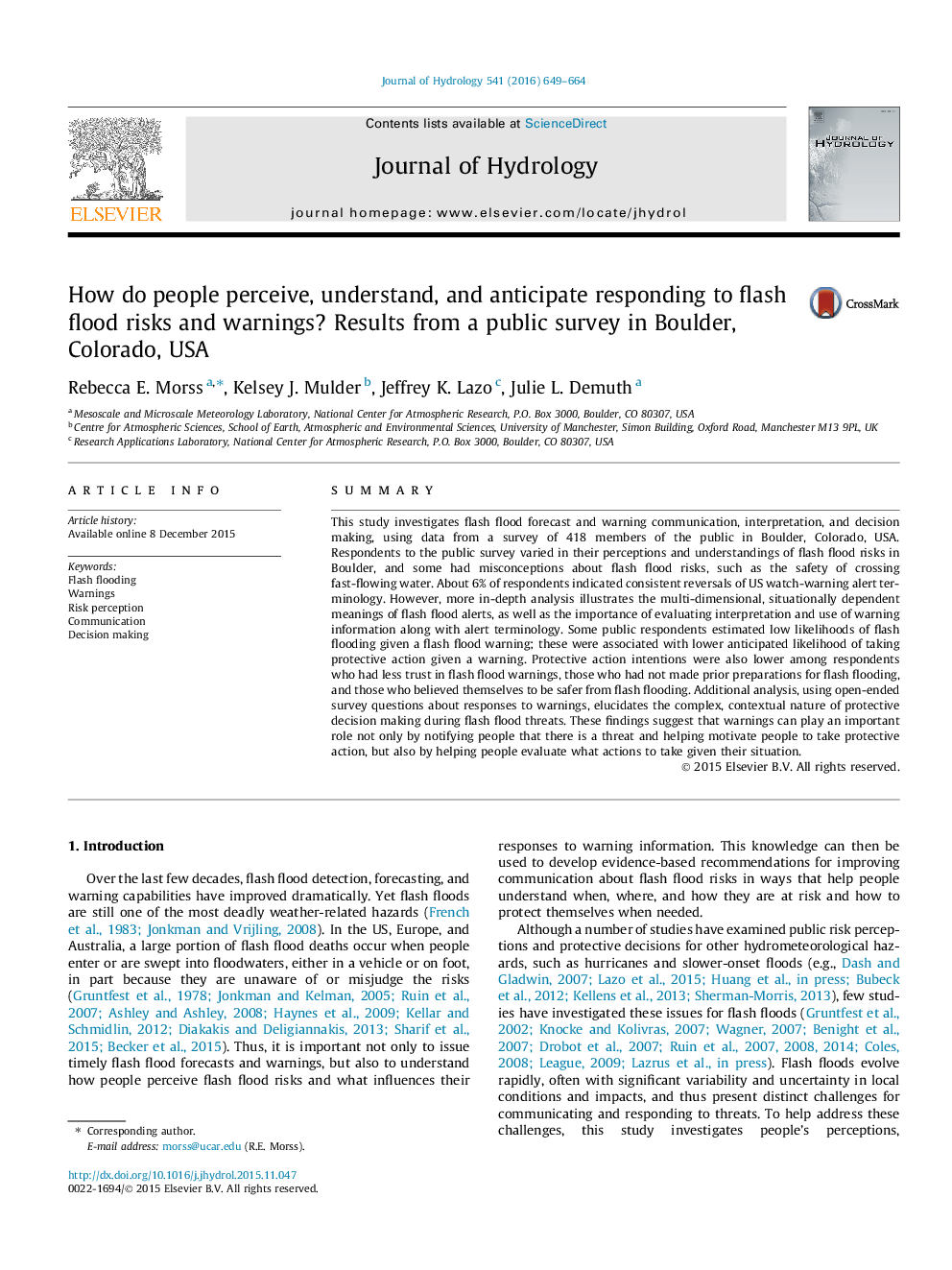| کد مقاله | کد نشریه | سال انتشار | مقاله انگلیسی | نسخه تمام متن |
|---|---|---|---|---|
| 6409400 | 1332869 | 2016 | 16 صفحه PDF | دانلود رایگان |
- We used data from a public survey in Boulder, Colorado, USA, about flash flooding.
- Some thought flash flooding was very unlikely and misunderstood flash flood risks.
- Those who thought a warning meant flash flooding was likely were more likely to act.
- It is important to ask how people interpret and use warning information in context.
- Flash flood decisions are complex, and so improved warning information is needed.
SummaryThis study investigates flash flood forecast and warning communication, interpretation, and decision making, using data from a survey of 418 members of the public in Boulder, Colorado, USA. Respondents to the public survey varied in their perceptions and understandings of flash flood risks in Boulder, and some had misconceptions about flash flood risks, such as the safety of crossing fast-flowing water. About 6% of respondents indicated consistent reversals of US watch-warning alert terminology. However, more in-depth analysis illustrates the multi-dimensional, situationally dependent meanings of flash flood alerts, as well as the importance of evaluating interpretation and use of warning information along with alert terminology. Some public respondents estimated low likelihoods of flash flooding given a flash flood warning; these were associated with lower anticipated likelihood of taking protective action given a warning. Protective action intentions were also lower among respondents who had less trust in flash flood warnings, those who had not made prior preparations for flash flooding, and those who believed themselves to be safer from flash flooding. Additional analysis, using open-ended survey questions about responses to warnings, elucidates the complex, contextual nature of protective decision making during flash flood threats. These findings suggest that warnings can play an important role not only by notifying people that there is a threat and helping motivate people to take protective action, but also by helping people evaluate what actions to take given their situation.
Journal: Journal of Hydrology - Volume 541, Part A, October 2016, Pages 649-664
